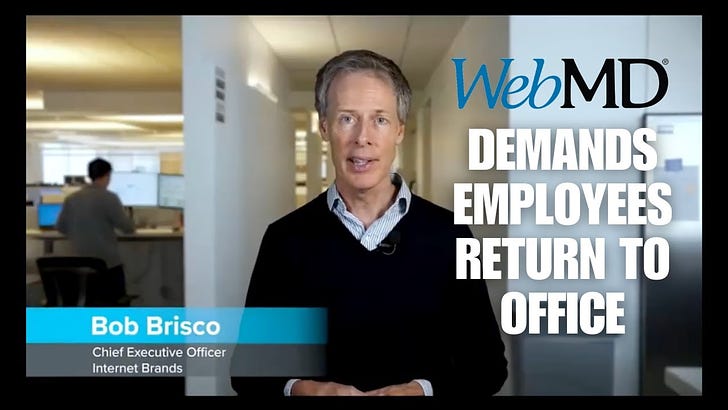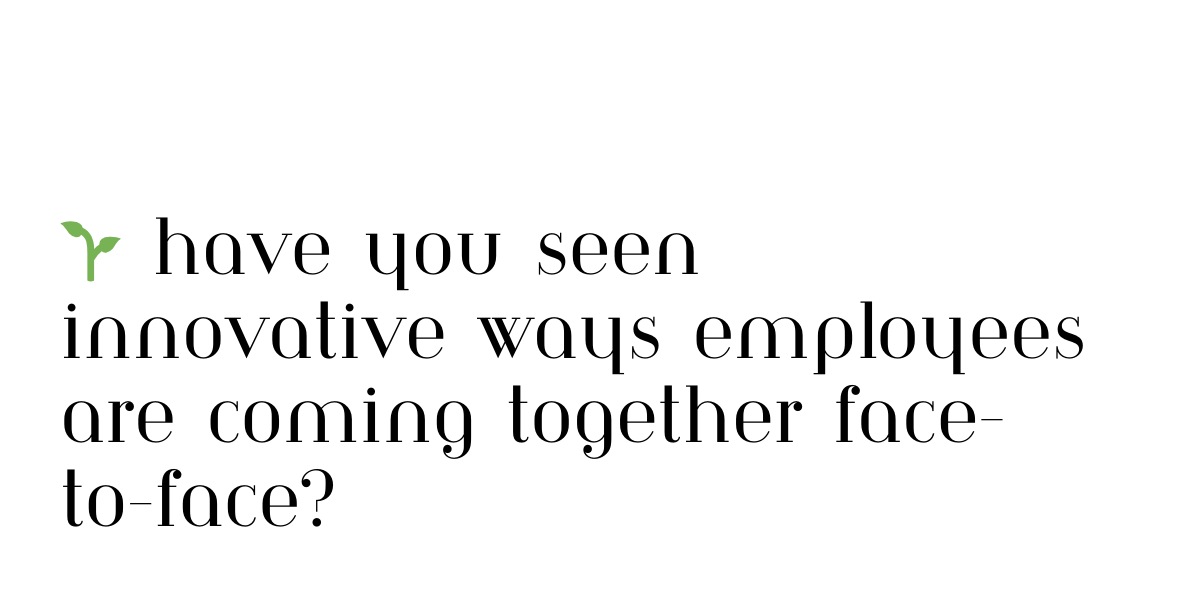👋 I challenge conventional thinking to help people craft well-rounded lives that blend career, caregiving and self-care.
To get all new Rule Breaker posts in your inbox, I suggest subscribing - your sanity will thank you!
Growing up, my mom would call me Messy Jessie. Whether it was something on my face or the inevitable juice spill every time I drank, messiness was a bit of my hallmark.
Though I barely remember those days, one thing's for sure: I only wear sweats I don't mind staining when I’m cooking or around my kids. Keeping things pristine? Not exactly my forte.
So, needless to say I’m okay in messy situations.
Sadly, it seems that many executives these days are not so comfortable in the mess.
I’m particularly talking about the return to office mandates that have been coming out and pushing employees back to their cubicles.
We are missing an incredible opportunity to take stock of this messy situation and redefine what working in an office looks like.
Workers Are Being Pushed Back Into The Office
Last week, WebMD made headlines for a cringey video they made communicating their return to office mandate.
(Check out the full WebMD video and my reaction 👇)
They aren’t alone though. A 2023 study revealed that nearly three quarters of employers are mandating a return to the office. There is a website that tracks Fortune 100 return to office policies.
We are clearly shifting from a ‘what will the new normal look like?’ into a ‘this is what normal will look like moving forward’ era. But I’m getting nervous that we are overlooking a critical input into our decision making.
Baseless Rationale For The Shift
Up until now, the majority of the discussion has been about performance.
Leaders argue that company performance has suffered with employees remote, believing that forcing them back to desks will somehow boost profits, thanks to greater collaboration, innovation, and accountability.
But this hasn’t been the case. A study of 137 S&P 500 firms that mandated a return to the office found no improvement in earnings. Instead, there was only a noticeable dip in employee satisfaction.
Why? I believe it's because we're ignoring a significant aspect of employees' lives, one that's been in plain sight for decades.
Ignoring That Employees Are Also Caregivers
This dynamic wasn't present when the traditional 9-5 was conceived. Initially, it was mainly men in the workforce who didn’t have caregiving responsibilities.
Now, not only can work hours extend beyond the 8-hour mark, but most employees also have caregiving duties.
The flexibility introduced during COVID showed us a work model that didn’t just accommodate but embraced this reality. We had a chance to finally acknowledge that most employees are also caregivers, rather than sidelining them with minimal flexibility policies.
As I type from my home office, I’m feeling disheartened that flexible work models aren't being considered as part of the 'new normal'.
Embracing the Mess for a Better Workplace
The real opportunity lies in embracing this complexity. It's not about reverting to the old ways but asking, "How can we do better?".
We need creative solutions that bring people together, both face-to-face and virtually, recognizing that the structure of professional work must evolve to include the caregiving roles of employees.
Some thoughts on what a new path forward should include:
Hybrid Models For All: Flexibility should be the cornerstone of our return-to-office strategies. Most importantly, this flexibility should apply to everyone, including CEOs and Senior Execs. Hybrid models truly benefit caregivers only when the entire team is on a flexible schedule.
Enhanced Support Systems: Wanting to bring employees back to the office? Start by offering childcare. Subsidized child care, eldercare support services, and on-site mental health resources (including nap rooms that are actually used!) would significantly help.
Alternative Forms Of Community Building: Face-to-face interaction is invaluable but must be meaningful. Intentional company-wide retreats or team-building activities can foster collaboration just as effectively as hoping for spontaneous creativity among in-office workers.
Working from home all the time isn’t the right solution for the long term. I like seeing my colleagues in Toronto on quarterly offsites. And I’m trying to work from a cafe or co-working office more regularly just to get out of the house for things other than Costco runs.
But forcing people back into the office for a full, long work day isn’t the solution either.
Professional work has to evolve to incorporate the knowledge that many employees are also caregivers. This is not just a matter of policy but of recognizing the humanity at the heart of our workforce.
It’s bound to be messy, but that's all the more reason to embrace it rather than trying to quickly tidy it up and move on.
Keep well,
J
P.S. I’m prioritizing shipping over perfection, so this post may not convey all my thoughts perfectly. I’d love comments or questions to keep the discovery going.
P.P.S. With thanks, as always, to my Junior Associate, ChatGPT-4.0 (oh yeah, mama got an upgrade! 😛)
I’m doing more videos and if you haven’t seen them, hop over to YouTube and subscribe to see what comes out!








The mandatory return to the office is about several things: 1) the old "control and command" mindset of the patriarchy - based on lies (surprise, surprise!!) as data has consistently been pointing to zero loss of productivity; 2) a total lack of care and compassion for employees who have limited financial means, or God Forbid would like to spend time with their families versus being gaslighted, bullied or harassed at the office, 3) the inability from the C-Suite and Boards to adapt their business models and real estate footprint.
Make no mistake the "return to the office" mandates are not based on shareholders or employees' benefits but on managers' inability to see and implement another model aligned with the century we are living in.